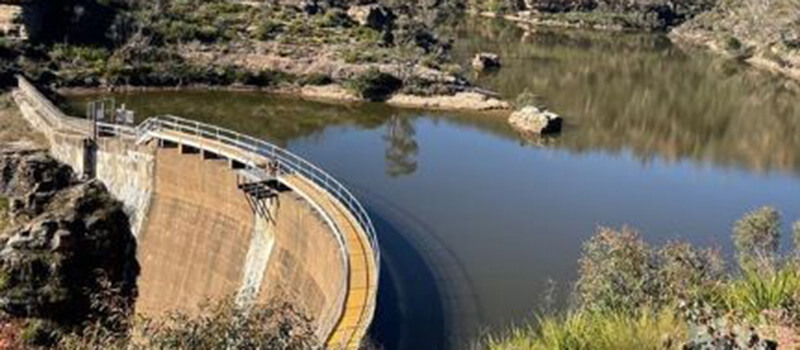Definitions
- Decommissioning – the complete or partial removal of a dam. Decommissioning does not automatically change the declaration status of a dam. A formal consequence category assessment must be reviewed by Dams Safety NSW (DSNSW) before changing a dam’s declaration status.
- Revoking declaration – changing the status of a dam so that it is no longer a declared dam in NSW. This requires DSNSW reviewing a consequence category assessment that has been prepared using the current Declared Dams Consequence Category Assessment and Determination Methodology .
Decommissioning a declared dam
Declared dam owners must inform DSNSW if they intend to decommission a declared dam and must provide a proposed timeframe of works for review and discussion.
Dam owners thinking of decommissioning should consider the environmental benefits of the dam, community stakeholder value placed on the dam, its role in flood mitigation and any heritage listings. Decommissioning is a significant change to a dam and the Dams Safety Regulation 2019 (Clause 21) requires owners to notify DSNSW before undertaking decommissioning works.
Decommissioning must be done with reference to the dam’s Dam Safety Management System. The decommissioning process must be managed to ensure it does not temporarily endanger life or increase any infrastructure, environmental, health, or social impacts. Emergency Plans and Operations Plans may need amendment to account for temporary and permanent changes during and after the decommissioning process.
Design of physical works and processes must be done by a competent person working under a Quality Management System. Depending on the current consequence category of the dam, independent review may be required, and that review may be by a competent person or a panel of competent persons.
As with any design or construction work on a declared dam, work may be audited for compliance.
Revoking the declaration status of a declared dam
Decommissioning does not automatically revoke the declared status of a dam. The decommissioned dam must have a new consequence category assessment, and this assessment must be submitted to DSNSW. If the dam is an extreme or high consequence dam, the assessment must also be reviewed by a competent person who has not been involved in the assessment process.
To have the declaration revoked, the owner must demonstrate that life is not endangered, and that the severity of environmental and infrastructure damage or loss is not major or catastrophic. The competent person producing the consequence category assessment must engage with ALL elements of the damage or loss tables in the methodology. Appropriate evidence must be used for each element. For example, environmental aspects must be covered by suitable environmental evidence or signed off by an environmentally qualified competent person.
When tailings dams are capped, or when dams are modified by removal of the dam wall, evidence may be that the consequence category is low or very low or found in a risk report where it is concluded that there are no credible failure modes for the dam.
A dam remains declared until the list of declared dams is published in the NSW Government Gazette without the dam on that list. This list is normally published twice yearly. Until publication, normal inspections must be continued under the dam’s Dam Safety Management System.
Once a dam is no longer declared, Dams Safety NSW has no further requirements regarding that dam. Local councils may still have requirements, and Dams Safety NSW recommends owners follow best practice safety and asset management practices, such as those for small dams.
More information
Dams Safety NSW
Phone: (02) 9842 8073
Email: info@damsafety.nsw.gov.au
Resources
Declared Dams Consequence Category Assessment and Determination Methodology - Government Gazette No 113 of Friday 18 March 2022 (nsw.gov.au)
Engaging a competent person or panel to review my dam reports and assessments | Dams Safety
New guide helps small dam owners understand how to manage their dam's safety | Dams Safety
